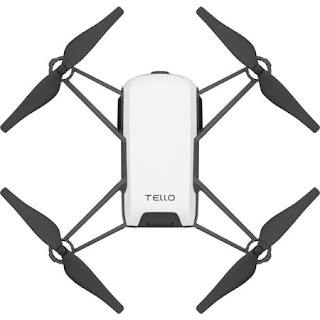UAV (Unmanned Aerial Vehicle) The DRONE.
The cinematic shorts are very much famous and that short becomes more impressive when it is taken with a drone.
If we want to do more than just hover our drone so for that.
So in this article, we know about the drone, its various components, and its working principle.
What is a DRONE?
The drone is like a flying robot it is also called UAV (Unmanned Aerial Vehicle) or a quadcopter because it uses four propellers to fly. The drone is usually controlled with a remote control unit and they can manage all things in the air due to a smart functioning software program. It possesses so many sensors like GPS etc.
Components of a Drone.
- Frame:- The frame of a Drone works in much the same way as the frame of a car works, that to support and add strength to the vehicle. Frames are typically made from plastic or carbon fiber and can be arranged with different arm variations (tri, quad, hex, oct). Carbon fiber tends to be a favorite because of its strength and lightweight.
- Motors:- There is a separate motor for each blade/arm. The measure of the RPMs, or speed of the rotors, is its kV value. Faster builds will be upwards of 1400kv, while slower, longer battery life builds are roughly 300-900kv.
- Propellers:- They can also be made from plastic or carbon fiber. Carbon fiber is the higher-end choice, but also more expensive. When picking propellers, be sure to check that your frame can house the size you are selecting. Most frames will have a max propeller size to them. One is a CW (clockwise) spinning prop, and the other is CCW(counter-clockwise). If you are building a drone (quadcopter), you will have to order two.
- Battery:- batteries come in a wide variety of weights and capacities. It seems intuitive to always pick the largest capacity battery to achieve the longest flight time, If you want a high capacity 10,000 mah 6s battery, be sure your motors and ESC are 6s, and that your flight controller can support it.
- ESC (Electronic Speed Controller):- It runs the motors you have. ESCs are rated for the amount of current they can consistently supply to the motor system. Since the motors are constantly spinning at different speeds, they need a speed controller to dictate that to them. If the motors all ran at the same speed, you would always be hovering. Since we are not changing the pitch of the rotors, the pitch of the system is through difference in motor speeds.
- Transmitter and Receiver:- This combination is the “remote control” to operate your drone. The transmitter “transmits” the signal, and the receiver “receives” it. The receiver is connected to the flight controller delivering these inputs and outputting the responses to the motors.
Now that you have a basic understanding of the different components of a drone, it’s time to discuss how these all come together to achieve flight.
How the drone flies.
A quadcopter uses four different propellers, powered by four different motors, on 4 separate arms.
Each spinning propeller creates its own torque. Now, remember Newton’s Third Law which states “to every action, there is an equal and opposite reaction.” So if that propeller is spinning, the arm holding it will want to spin in the opposite direction. That's why a traditional helicopter has a tail rotor, to compensate for that torque.
Each spinning propeller creates its own torque. Now, remember Newton’s Third Law which states “to every action, there is an equal and opposite reaction.” So if that propeller is spinning, the arm holding it will want to spin in the opposite direction. That's why a traditional helicopter has a tail rotor, to compensate for that torque.
In a quadcopter, we don’t need a tail rotor because we can combat that per-propeller torque with an equal and opposite torque (the propeller opposite it).
See in the picture how the opposite propellers are spinning in the same direction. They are canceling out each other’s torque effect.
See in the picture how the opposite propellers are spinning in the same direction. They are canceling out each other’s torque effect.
This allows drones (quadcopters) to hover extremely well. If you were to hover a helicopter and apply more power, then there will be more torque, and more power will be needed from the tail rotor. These problems obviously don’t exist in drones because the power increase is always done equal and the opposite in the propeller system.
If we want to do more than just hover our drone so for that.
If we want a forward motion of our drone, then both forward propellers will apply less power, while the back propellers add more, this principle applies to all roll directions.
If we want that torque reaction to being more prominent in the left direction. So the quadcopter gives more power to the propellers that have a left torque direction (clockwise spinning propellers(1st and 3rd no.)).
Power is either increased to the entire propeller system to ascend or decreased to make a descent. Now you can fly your quadcopter in multiple ways and record good videos and take good cinematic shorts. Here is a short clip in which you see some beautiful shorts taken with a drone.
That is all about Drone, it was not that easy to understand but read it carefully and I hope you will understand,
In this article, we have known about drones, the Components of drones, and the working principle of how the drone can fly.
Thanks for viewing my article, if you like then click on the like button, if you have any doubts so you can comment below.
I will come back with my new article till then have a nice day and wait for my next article.
Thank you.
Thank you.




Good
ReplyDeletePerfect article bro 👍👍
ReplyDeleteit's too good.
ReplyDelete👍
ReplyDelete